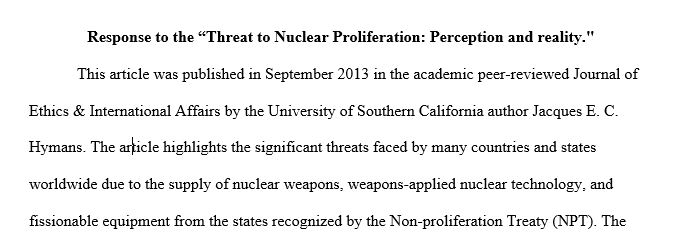The Threat of Nuclear Proliferation Perception and Reality
The Threat of Nuclear Proliferation Perception and Reality
Jacques E. C. Hymans*
Nuclear weapons proliferation is at the top of the news these days. Most recent reports have focused on the nuclear efforts of Iran and North Korea, but they also typically warn that those two acute diplomatic headaches may merely be the harbingers of a much darker future. Indeed, foreign policy sages often claim that what worries them most is not the small arsenals that Tehran and Pyongyang could build for themselves, but rather the potential that their reckless behavior could catalyze a process of runaway nuclear proliferation, international disorder, and, ultimately, nuclear war.
The United States is right to be vigilant against the threat of nuclear proliferation. But such vigilance can all too easily lend itself to exaggeration and overreaction, as the 2003 invasion of Iraq painfully demonstrates. In this essay, I critique two intellectual assumptions that have contributed mightily to Washington’s puffed-up perceptions of the proliferation threat. I then spell out the policy implications of a more appropriate analysis of that threat.
one page of response for each topic. the question should be based on below :
1.How does this article fit in with major theoretical perspective in international relations?
2. How does reliance on one theoretical perspective over another help /hinder this articles ?
3. What are the implications of this article’s arguments ?
4. How can this information be utilized, e.g. for crafting national security policy?
Answer Preview For The Threat of Nuclear Proliferation Perception and Reality
Access the full answer containing 604 words by clicking the below purchase button

